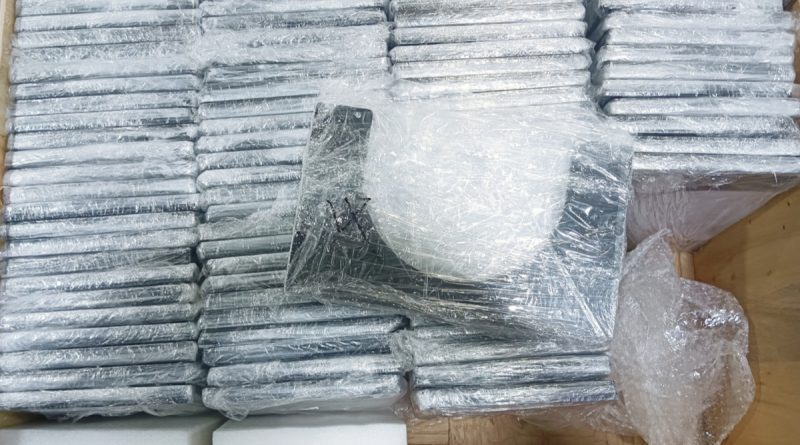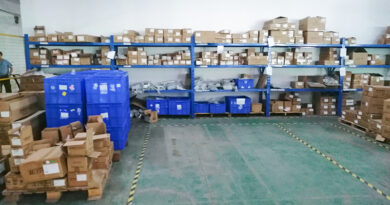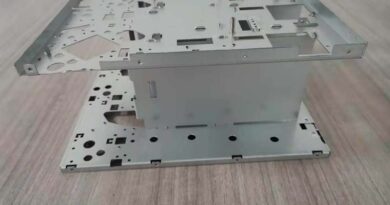Design tips for sheet metal bending
Designing sheet metal parts with bending in mind requires careful consideration of several factors to ensure the part can be manufactured accurately, efficiently, and without defects. Here are some essential design tips for sheet metal bending:
1. Material Selection
- Choose the Right Material: Consider factors like ductility, yield strength, and thickness. More ductile materials are easier to bend without cracking.
- Consider Material Grain Direction: The grain direction can affect the bend quality. Bending perpendicular to the grain direction reduces the risk of cracking.
2. Bend Radius
- Minimum Bend Radius: Always use a bend radius at least equal to the material thickness to prevent cracking. A larger radius reduces the risk of stress concentrations and increases the durability of the bend.
- Consistent Bend Radius: Use the same bend radius throughout the design where possible. This simplifies tooling and reduces costs.
3. Bend Allowance and Bend Deduction
- Account for Bend Allowance: Include bend allowance in your design to compensate for material elongation during bending. This ensures the part’s dimensions remain accurate after bending.
- Calculate Bend Deduction: Determine the amount to subtract from the flat length of the sheet metal to achieve the desired dimensions after bending.
4. Bend Orientation and Placement
- Avoid Acute Angles: Acute angles can be difficult to manufacture and may require special tooling. Aim for angles greater than 90 degrees when possible.
- Minimize the Number of Bends: Reduce the complexity of the part by minimizing the number of bends, especially in different directions.
- Consider Bend Relief: Add relief cuts near bends to prevent tearing and deformation, especially when bending near edges or holes.
5. Hole and Feature Placement
- Distance from Bends: Place holes, slots, and other features at a distance from bends at least 1.5 times the material thickness. This prevents distortion and weakening of the material.
- Avoid Features in Bend Zones: Avoid placing features such as holes or notches in areas that will undergo bending to prevent deformation and maintain strength.
6. Edge and Flange Design
- Smooth Edges: Design smooth, rounded edges to avoid stress concentrations and sharp corners that can cause cracks.
- Flange Length: Ensure flanges have a minimum length of at least 4 times the material thickness to provide sufficient material for bending.
- Flange Design: Consider the ease of bending and assembly when designing flanges. Long, narrow flanges can be challenging to form accurately.
7. Tooling and Tolerances
- Consider Tooling Limitations: Design with standard tooling in mind to reduce costs. Custom tooling can increase production time and expense.
- Set Realistic Tolerances: Be aware of the achievable tolerances for sheet metal bending. Allow for some variability due to material properties and machine limitations.
8. Assembly and Fastening Considerations
- Design for Assembly: Consider how the bent part will be assembled with other components. Include alignment features or tabs to simplify assembly.
- Allowance for Fasteners: Ensure enough space for welding, riveting, or other fastening methods, and avoid placing fasteners too close to bends.
9. Springback Compensation
- Account for Springback: Materials tend to “spring back” slightly after bending. Compensate for this by adjusting the bend angle during design.
10. Safety and Manufacturing Considerations
- Design for Safety: Avoid sharp edges and ensure that bent parts do not pose safety hazards.
- Ease of Handling: Design parts to be easy to handle and manipulate during the bending process. Large, heavy, or awkwardly shaped parts can be challenging to bend accurately.
11. Cost Considerations
- Optimize Material Usage: Design parts to maximize material usage and minimize waste. Consider nesting parts efficiently on the sheet.
- Reduce Complexity: Simplify the design to reduce the number of bends, special features, and custom tooling requirements, which can reduce manufacturing costs.
By keeping these design tips in mind, you can create sheet metal parts that are easier to manufacture, maintain structural integrity, and meet functional requirements. Proper design consideration helps avoid common issues such as cracking, warping, and misalignment, ensuring a high-quality end product.
Related Links:
china custom sheet metal parts | sheet metal fabrication company china | china sheet metal fabrication companies | china sheet metal fabrication manufacturers | china sheet metal forming manufacturers | china sheet metal fabrication factory | sheet metal fabrication companies in china | sheet metal parts manufacturing china | china sheet metal parts manufacturers | china sheet metal parts company | china metal enclosure manufacturers | china aluminum sheet metal fabrication manufacturers | china sheet metal manufacturing manufacturers




